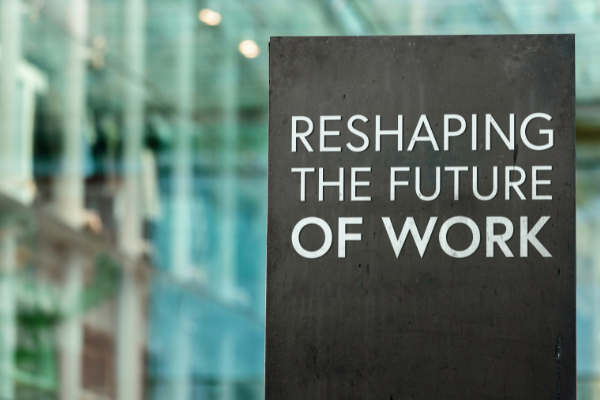Insights
INSIGHTS
All Topics
My Account
Hybrid working: how to make the most of Microsoft 365
02 Mar 2022by Laura Stanley
We explore the importance of Microsoft 365 in the age of hybrid working and how it can help charities work more efficiently
The concept of hybrid working is something that charities have become very familiar with, particularly over the last six months. Here at Charity Digital, we have an entire series dedicated to it, talking about the ins, the outs, the pitfalls, and the benefits of splitting our working hours between home and the office.
But we still have plenty to learn. In fact, after a few months of fully experiencing hybrid working, now is the perfect time to take a look at what’s worked and what hasn’t, which tools we need, and which ones we can breeze past.
For many organisations, Microsoft 365 has been the most instrumental tool in helping charities transition to hybrid working.
According to IT services provider to charities CoopSys, the goal for charities in the hybrid world is to ensure all employees are on an equal footing when it comes to accessing remote systems, and with Microsoft 365, organisations can do just that, wherever people maybe, and whatever the size or technical capability of their organisation.
Microsoft 365 is extremely easy to use. Charity workers are usually familiar with the PC predecessor MsOffice and all its components, whether it’s Excel, Powerpoint, Outlook, or Word. Being able to access everything remotely in the Cloud means that we can do everything we need to as usual even as we split our working hours between various locations.
And then there’s the cost. The free versions of Microsoft 365 can provide charities with the essentials they need, but eligible organisations can also get access to a discounted version of the premium subscription software through the Charity Digital Exchange.
But once we have the tool, the next step is making sure we make the most of it. Office365 offers more than the familiar MsOffice suite, adding new capabilities and features that can help greatly with hybrid working.
Here, we explain some of the biggest benefits of using Microsoft 365 and offer some tips on how to improve the ways we work with it as we start to go hybrid for good.
Moving up in the Cloud
We know the Cloud. The charity sector was already embracing the Cloud before the pandemic, but COVID-19 certainly accelerated the shift. Working from home meant we all needed to be able to access documents and work together on systems that could also be accessed from our kitchen table as well as the office.
Operating in the Cloud, Microsoft 365 offers charities much more flexibility. The Cloud stores your data remotely and securely, giving employees 24/7 access to their documents, and it’s very cost-effective.
With the Cloud, there is no having to download documents and reupload them – you and your team can edit them as you go, with complete visibility of any changes and with the knowledge that you’re all up to speed, increasing productivity.
It’s also more energy efficient than alternatives – though you can calculate its environmental footprint here.
Improving your team with Teams
The biggest new part of Office365 is Microsoft Teams and it really came into its own in 2020. Teams allowed us to continue to work together from afar, enabling us to chat, video call, file share, and much more, all from one very handy app.
Teams is an inbox cleanser – not everything has to be an email, when you can fire off a quick question in the chat bar. It is automatically integrated into existing apps, like Outlook, which automatically blocks out diary times for appointments made on Teams. It allows for quick responses, lets you read and edit files without having to leave the app, and you can easily search and find files later down the line.
There are also automated bots you can integrate with Teams to make your life easier, such as Soapbox, which helps keep all your meeting agendas and notes all in one handy place for everyone, without the need to painstakingly search briefs for the right info.
Keeping your data and files safe and secure
One of the biggest challenges that comes with hybrid working is how to keep everything secure. Working from our own devices on our home networks can provide cyber criminals with avenues which they can exploit to access to your sensitive data and information.
But the Microsoft 365 E3 and above subscriptions, provide users with a BitLocker encryption tool, which encrypts volumes of stored data “at rest” (I.e., not being used or open in an app). This feature also facilitates part of GDPR compliance.
Microsoft 365 E3 also offers Customer Key, which is an added layer of encryption for data used by an application such as Exchange Online, Skype for Business, SharePoint Online, or OneDrive for Business. This protects data from being viewed by unauthorised systems or personnel and allows you to explicitly allow Microsoft 365 services, such as eDiscovery, to use your encryption keys.
If you ever decide to stop using Microsoft 365, you can easily cancel your key, making the data unreadable on the service. This effectively deletes it but reduces the risk of leaving some data undeleted inadvertently.
Some higher-tier subscriptions also come with Microsoft Security, which can help larger organisations to manage their cyber security in a single application. Microsoft Security uses Artificial Intelligence (AI) to automatically find and protect against vulnerabilities, allowing those in charge of cyber security to focus their attention where it is needed most.
Discovering your data
With Microsoft 365’s Advanced eDiscovery tool, charities can keep track of all the digital data they have at their disposal. It can help clean up your data by finding unnecessarily duplicated files and can ensure that all copies of data due to be deleted are.
The tool can also collect and copy data into review sets, allowing you to filter, search, tag, and analyse only the most relevant bits you need. It uses machine-learning to predict which data you might want to prioritise, so charities can filter it according to its prediction scores and hopefully see the most salient data first.
Learning more to keep the show on the road
In addition, Microsoft 365 offers plenty of opportunities for collaboration, via SharePoint and Teams. For instance, Together mode on Teams is a virtual filter that gives the appearance of your team all being in a room alongside each other, in a bid to recreate the social element of meetings and combat video fatigue.
It brings their video feeds together in one space, superimposing them onto lecture theatres or around board tables, as a fun alternative to the grid layout we’re all used to from video conferencing. Staff can also liven up meetings by adding their own custom background, such as airline seats on beach scenes.
It may seem simple, but with charities now embracing hybrid working for at least the foreseeable future, digital tools like this can boost morale and foster a sense of camaraderie, replacing those all-important little moments around the water cooler that keep the wheels turning day-to-day.
Making the most of what Microsoft 365 has to offer can ease the integration of hybrid working in your organisation and you can find some more helpful hacks and insight into its lesser-known tools here.
Remember: we’re still in the early stages of this shift in working practices – it is not a process we will ever really complete. We have learnt a lot of it on the hoof but with the right tools and the knowledge to unlock their full potential, the only way for charities now is up.
Find out more
If you would like to know more or need assistance with how to work with Microsoft 365, clcik above to check out the CoopSys website
Laura Stanley
More on this topic
Recommended Products
04 Jan 2025by Aidan Paterson
The best bank accounts for charities
03 Jan 2025by Ioan Marc Jones
Climate change facts you need to know in 2025
03 Jan 2025by Ioan Marc Jones
An A-Z glossary of climate change terms and definitions
Our Events
Charity Digital Academy
Our courses aim, in just three hours, to enhance soft skills and hard skills, boost your knowledge of finance and artificial intelligence, and supercharge your digital capabilities. Check out some of the incredible options by clicking here.



















